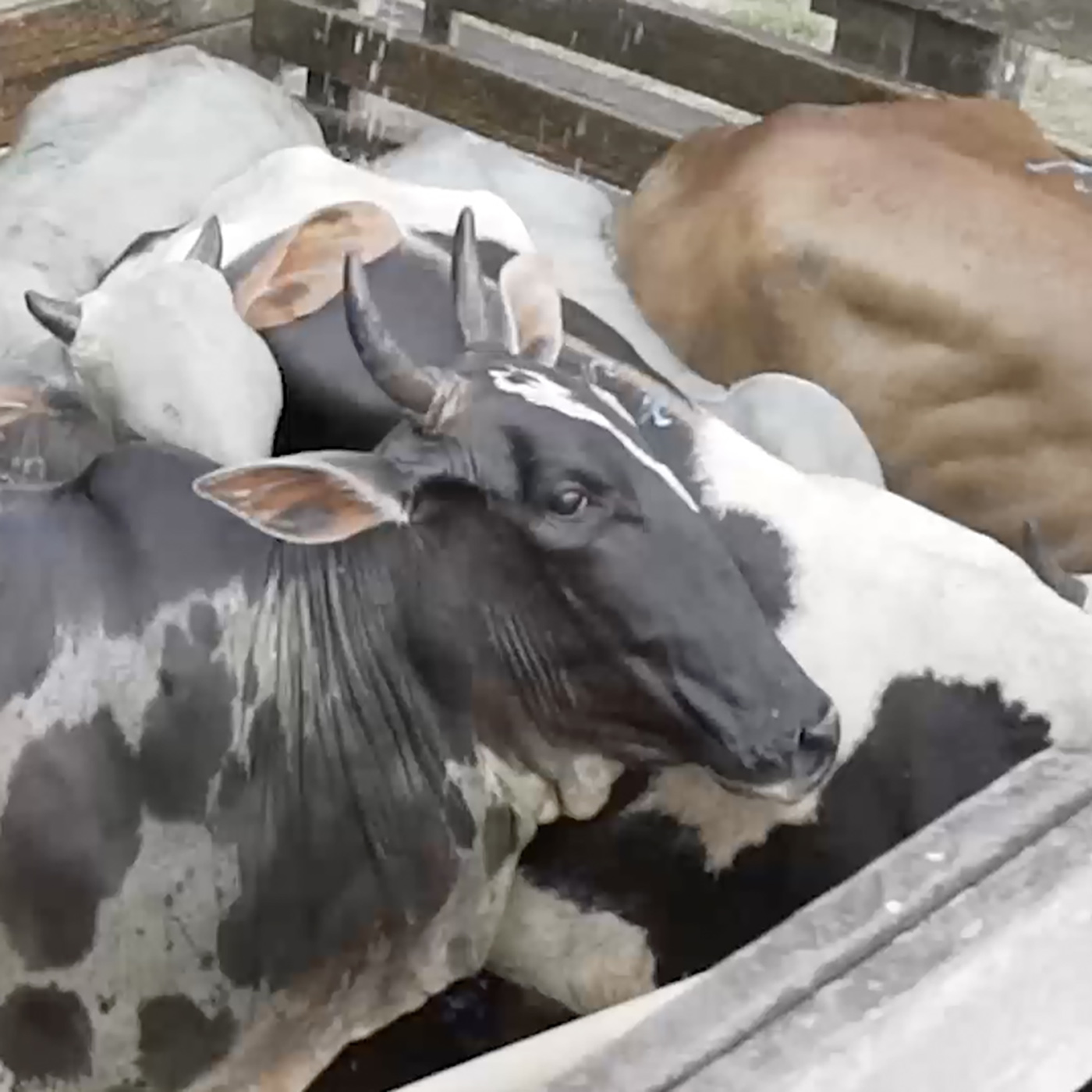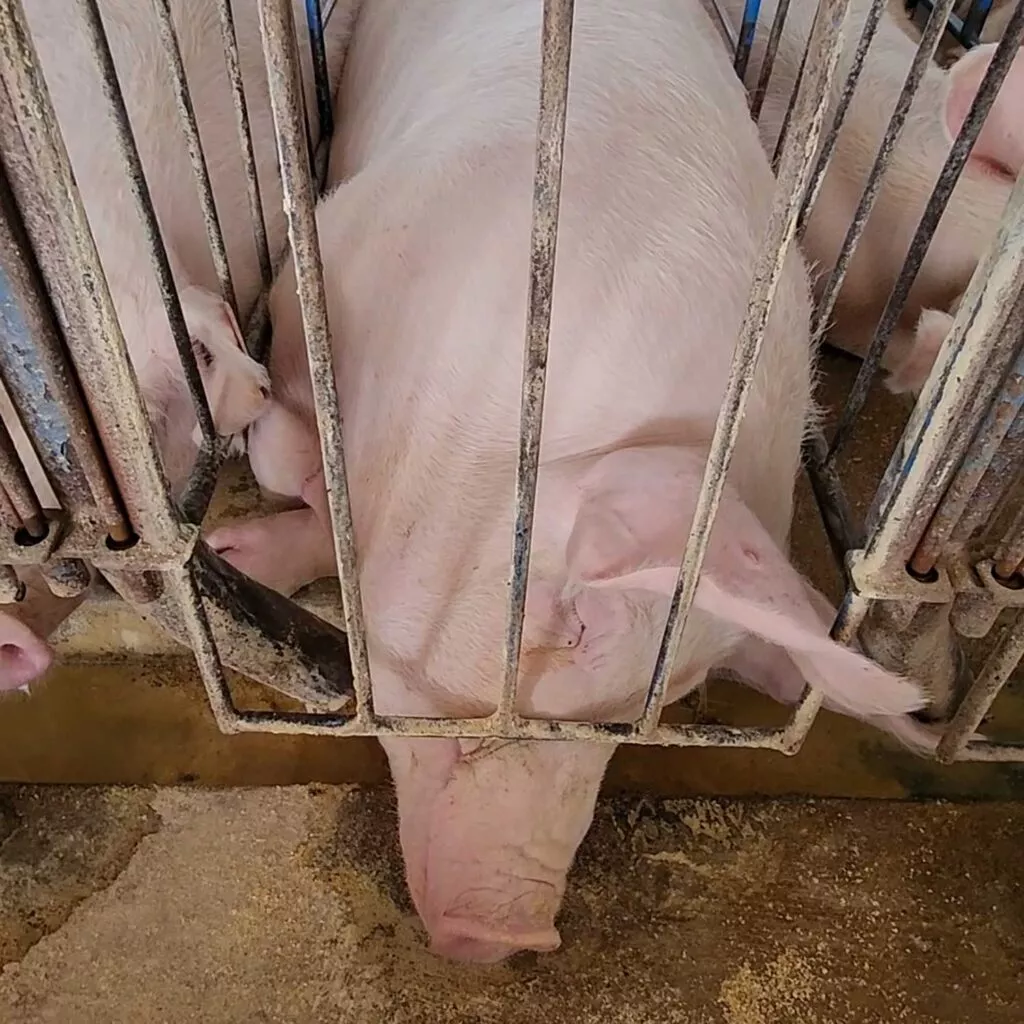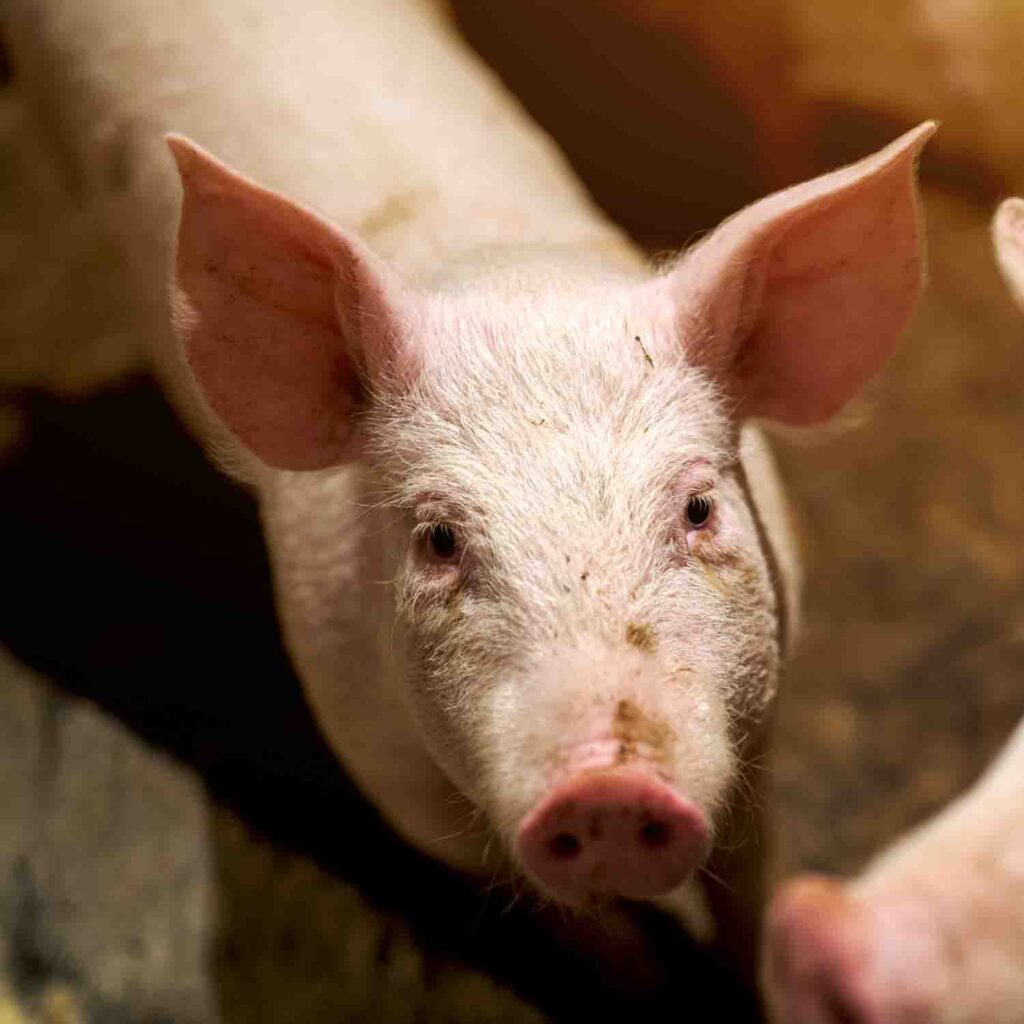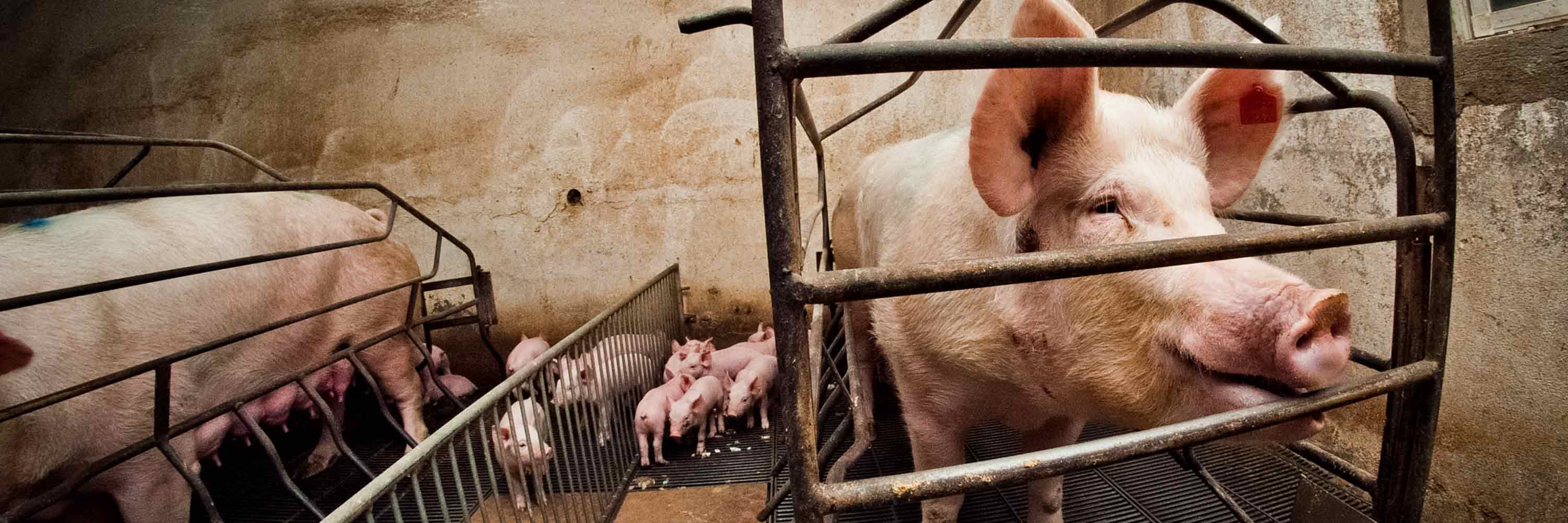

10 things you need to know about pig farming
Extreme confinement, artificial insemination, and painful slaughter: how many of these industry practices are featured on pig meat packaging at your local grocery store?
From birth until death, pigs used for bacon, ham, and other pork products experience a lifetime of suffering. The industry attempts to hide this sinister secret with “humane” labels, colorful packaging, and full-scale marketing campaigns that have worked…until now.
Consumers are discovering the truth about pig farming. Here’s everything you need to know to join them:
1. Mother pigs live in small, metal cages
Pigs used for breeding spend most of their lives trapped in small, metal cages, where they are unable to turn around or take more than a step forward. The only time a mother pig will walk is when she is led from the gestation crate—where she spends her entire pregnancy–to a farrowing crate, where she gives birth.
Gestation crates have been banned in eleven U.S. states and several nations. Yet, as mother pigs bite the metal bars in psychological agony–often foaming at the mouth or throwing their heads against the metal bars–many companies still allow them in their supply chains.
2. Pigs are artificially inseminated for breeding
Artificially breeding has become a factory farming industry standard. Workers collect male sperm cells and manually insert them into females’ reproductive systems with a catheter. This is frequently done in unsanitary conditions by inexperienced workers, leading to infection and even death.
Female pigs used for breeding undergo this process repeatedly over several years, often resulting in prolapsed organs. After a lifetime of repeated insemination, mother pigs are ultimately slaughtered.

3. Piglets are mutilated without anesthesia
Piglets undergo a series of painful yet legal mutilations, often without anesthesia. They include:
- Tail docking: To prevent tail biting–a behavior stemming from stressful living conditions–piglets’ tails are removed. Often, this is done with hot irons.
- Teeth clipping: To prevent injuries during suckling, workers remove piglets’ teeth with pliers.
- Castration: Workers use rubber rings to cut off circulation to male pigs’ scrotums, inducing tissue death.

You can end this cruelty! Please sign our petition calling for ending factory farming in the United States.
4. Cannibalism is rampant in the pig farming industry
Animal Equality’s investigations into the global pig farming industry have found distressed pigs engaging in unnatural behaviors. During one such investigation inside five Spanish pig farms, investigators found pigs nibbling at each other’s carcasses.
Similar findings were discovered during a 2018 investigation in Spain, which later resulted in criminal charges being filed against two defendants.

5. Piglets are killed with blunt force
During an investigation into a “quality assured” farm in the United Kingdom, Animal Equality’s investigators found piglets hammered to death by employees. Others were slammed onto the concrete floor.
Investigative footage found conscious piglets writhing in pain following the blunt force trauma, often struggling for minutes before death.
Killing piglets with hammers is a common industry practice recommended by many industry manuals. It is often used for piglets who are too small or weak for the industry to profit from.
6. Pigs live in unsanitary conditions
Animal Equality’s investigations have consistently found pigs lying in their own feces, with many farms facing cockroach infestation. In some cases, feeding troughs are also filled with feces, while dead bodies lie strewn about.
During an investigation into an Italian pig farm, investigators found pigs’ heads, legs, and other body parts scattered about the farm. Containers were filled with pigs’ remains, a violation of Italian law. During a previous investigation of this same farm, mummified remains and worm-filled carcasses were found.
Pigs from this farm were later packaged for grocery store shelves with a label signifying “Made in Italy Excellence.”

7. Pigs die before reaching the slaughterhouse
Due to injuries and unsanitary conditions, many pigs die before ever reaching the slaughterhouse. Animal Equality’s investigations have found piglets left to die on factory farm floors, just feet away from their caged mothers.
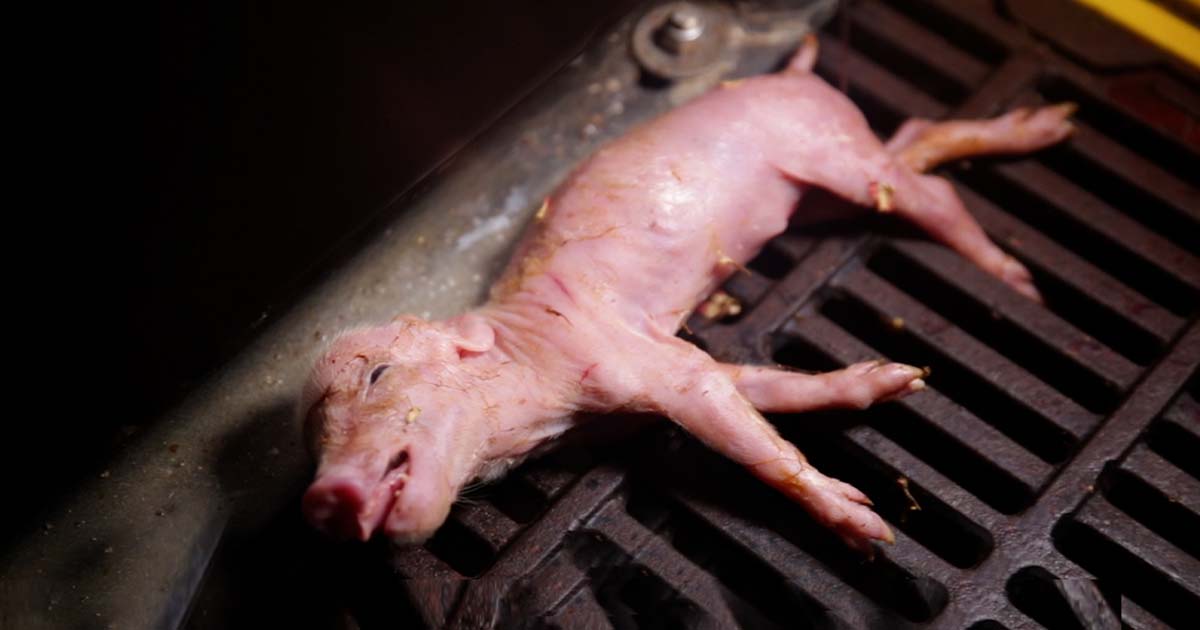
Meanwhile, adult pigs suffer from lameness and other diseases. The ever-increasing death rates on factory farms have caused alarm for industry experts, who noted that 2023 was the worst year on record for pigs used for breeding.1
8. Pigs are bred to suffer
Pigs are bred to grow unnaturally large, generally reaching up to 250 pounds in just six months.2 Those used for breeding can grow even larger, with many weighing in at 550 pounds or more.3 This rapid growth is a product of genetic engineering and antibiotic use, along with restricting pigs’ movement in cages. Their unnatural size often causes immobility and other illnesses.
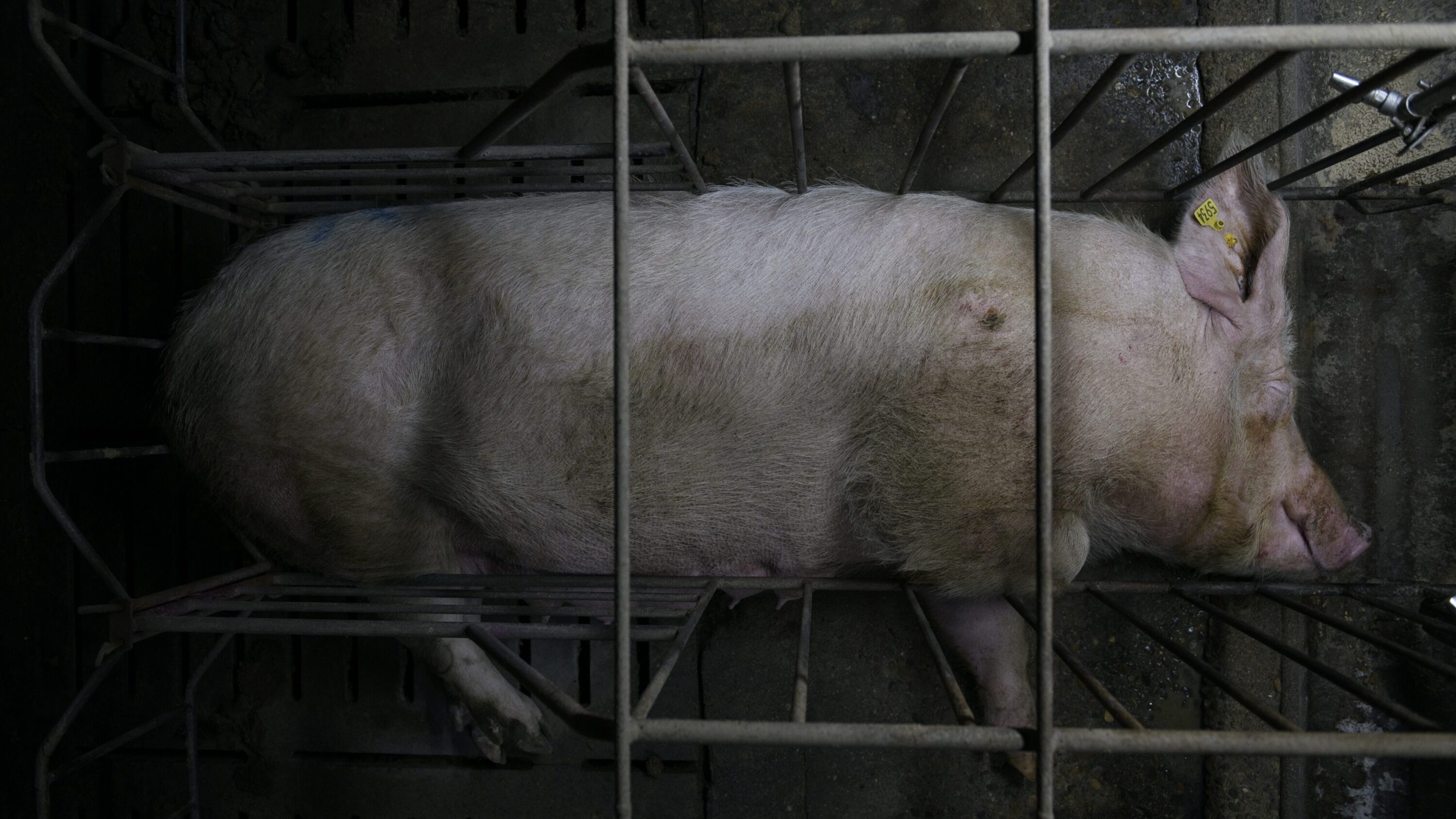
9. Pigs are beaten on the way to the slaughterhouse
As workers load and unload pigs onto transportation trucks, they often kick and hit weakened animals to coax them into moving. The frightened animals are then exposed to loud noises, extreme weather, and prolonged periods of hunger and thirst on their long journeys, which can last up to twenty-eight hours without stopping.
Many lie in their own excrement for the entire journey, with some slipping and falling in their waste. Far too often, road accidents cause injuries on board, with some animals falling out of the trucks and onto the road. Others succumb to their injuries and illnesses on the way to the slaughterhouse.

10. Pigs feel pain during slaughter
While the law requires slaughterhouses to stun pigs before slaughter, their methods are often ineffective. In some cases, workers deliver an electric current to the head via a bolt gun. In other cases, pigs are forced into a carbon dioxide gas chamber, where they struggle desperately to breathe and attempt to escape.
Pigs are then shackled by one leg and lifted, their throats often slit while conscious. Many feel the pain of the sharp blade and suffer as their bodies are thrown into scalding tanks of water.

Take a stand against factory farming cruelty
Similar to humans and other animals, pigs express emotions, feel pain, and form bonds with others. In the factory farming industry, these intelligent animals experience separation, mutilation, and trauma.
Today, you can take a stand against this cycle of pain by sharing the truth with your loved ones. Send this article to a friend or family member, and invite them to join you for a plant-based meal tonight.

SAVE ANIMALS FROM ABUSE
Pigs, cows, and other animals feel pain and deserve to be protected from abuse.
You can protect these intelligent animals by simply choosing plant‑based alternatives.
- Shike, J. (2024, February 5). Sow Death Loss Reaches All-Time High in 2023: What Can Producers Do Now? Pork Business. https://www.porkbusiness.com/news/hog-production/sow-death-loss-reaches-all-time-high-2023-what-can-producers-do-now
- Waxman, A. (2020, November 10). 6 Cruel Ways That Pigs Are Abused on Factory Farms. The Humane League. https://thehumaneleague.org/article/factory-farmed-pigs
- Schulz, L. (2021, July). Producers Freshen the Swine Breeding Herd. Iowa State University Extension and Outreach. https://www.extension.iastate.edu/agdm/articles/schulz/SchJul21.html
Recommended

